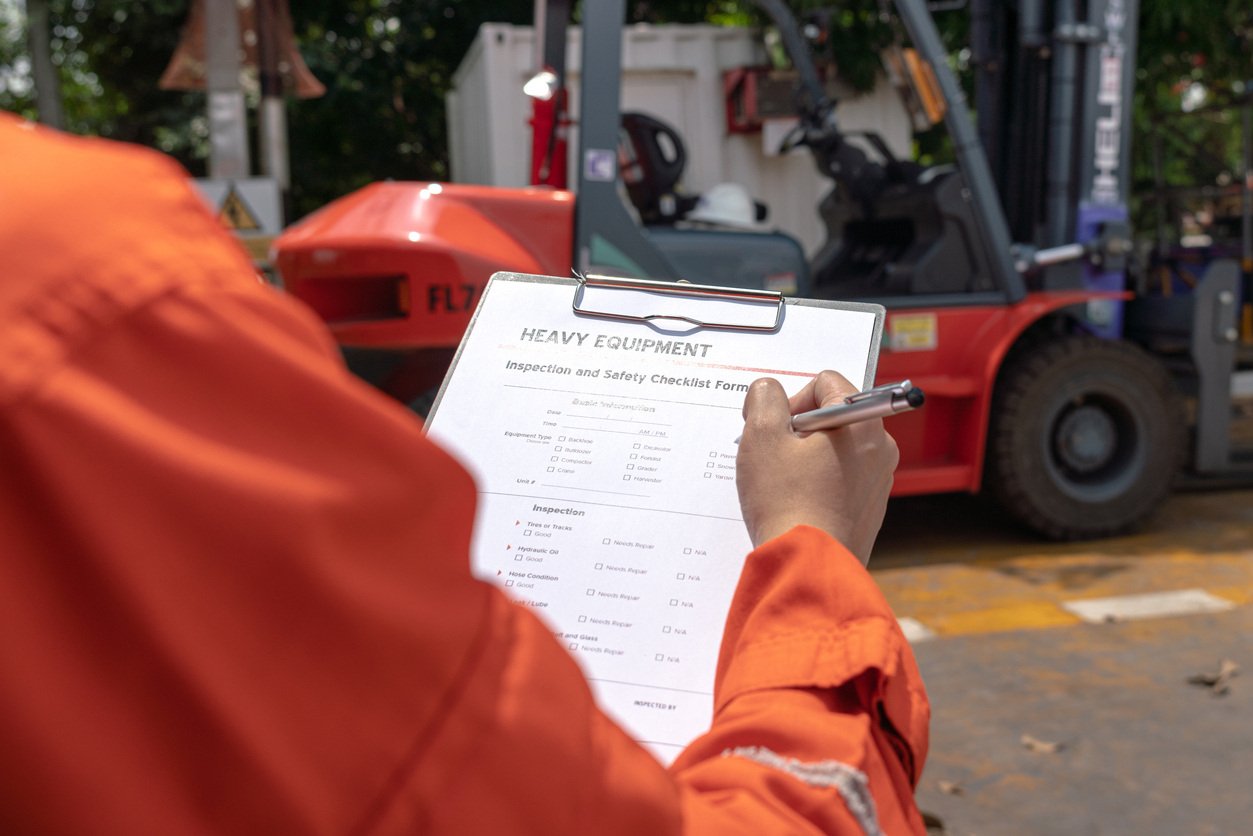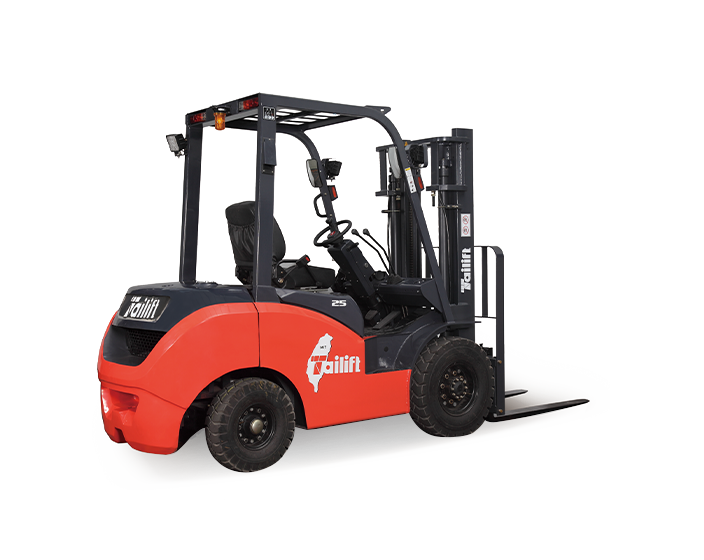Preparing Your Tailift Forklifts for Fall: Reducing Downtime with Maintenance
As temperatures drop, days get shorter and leaves start changing colours, fall is on its way in. It’s time to prepare your Tailift Forklifts with some preventative maintenance. This will help you stay ahead and reduce downtime during the autumn months. In today’s blog, we’ll look at why having a forklift maintenance schedule is important and go over the key inspections you should include on your fall maintenance checklist. From checking fluid levels to inspecting tires, we’ll help make sure your lift trucks are ready for the season’s challenges.
The Importance of a Forklift Maintenance Schedule
Forklift preventative maintenance involves routine checks to ensure everything from fluid levels and attachments to safety items and electrical components are functioning properly. The main goal of preventative maintenance is to identify and fix potential issues before they become more serious, costly problems or lead to accidents. A planned forklift maintenance schedule is essential for keeping your equipment in good condition. It helps prevent unexpected downtime and productivity losses. Forklift preventative maintenance should include daily, seasonal and annual inspections. Using a maintenance checklist can help avoid sudden forklift failures, reduce the risk of employee injuries and prevent excessive wear on equipment. Maintenance is also central to maximizing business uptime and operator productivity. Below we’ll look at the benefits of having a forklift maintenance schedule in more detail.
Benefits of a Forklift Maintenance Schedule
- Advanced Safety: As you may know from our other blogs, forklifts are a leading cause of workplace injuries and deaths. Without proper precautions, these accidents will keep happening. Preventative maintenance is crucial in reducing these risks. By identifying issues with forklifts early, you can limit the dangers operators face.
- Improved Productivity: When a forklift breaks down, productivity takes a hit. Regular maintenance helps prevent these disruptions. Keeping your forklifts in good working order ensures they operate smoothly, maintaining your productivity levels.
- Increased Savings: Even with a forklift maintenance checklist, you might still run into some issues from time to time. But these problems are usually minor compared to what could happen if you skip maintenance altogether, which can lead to major and expensive repairs. Keeping up with regular forklift maintenance is a smart way to keep costs down and avoid bigger problems.
- Improved Lifespan: Preventative forklift maintenance catches problems before they become significant issues. Addressing these early prevents expensive repairs down the line. A consistent forklift maintenance schedule ensures your lift trucks last longer and perform better, giving you more value for your investment.
What’s the Right Forklift Maintenance Schedule for Your Equipment?
The frequency of performing forklift maintenance varies by model and parts. According to the Canadian Centre for Occupational Health and Safety (CCOHS), three types of service inspections are recommended:
- Planned Maintenance Inspection: Following the manufacturer’s recommended interval, or if none is provided, approximately every 200 hours.
- Annual Planned Maintenance Inspection: Every 2000 hours or annually, whichever comes first.
- Lifting Capacity Inspection: Determines whether the lift truck can handle the maximum load specified on the nameplate.
Some parts, like safety features, require daily checks, while other internal components only need quarterly or yearly maintenance. Several factors may also affect how often your forklifts need maintenance. Older equipment typically requires more upkeep than newer models. Pay attention to the service history – if a particular part tends to break down, focus on that component. The application of your forklifts also matter; tough operating environments like food processing plants, wood and pulp plants, concrete factories and recycling plants can cause more damage, requiring more frequent maintenance than the standard schedule. Additionally, consider maintenance standards. The CCOHS has set forklift maintenance guidelines, but maintenance managers can choose to exceed these standards to further improve safety and efficiency.
Fall Forklift Maintenance
As fall approaches, the changing weather can impact forklift operations in several ways. Fog, for instance, can reduce visibility and affect safety. To address this, consider updating your operators’ PPE for the colder season. As temperatures drop over the autumn months, many operators will also be wearing jackets or coats. It’s a good idea to add brightly coloured or reflective vests over these layers to ensure visibility. Additionally, providing gloves for operators working outdoors can help them keep a firm grip on the wheel. The more comfortable and visible your operators are, the more safely and efficiently they’ll be able to use the forklifts.
Add These Tips to Your Fall Forklift Maintenance Checklist
-
Examine Forklift for External Damage
One of the first items on your autumn forklift maintenance checklist should be to check for any scratches. In the fall, the air is filled with moisture, leading to fog and dew. This excess moisture can seep into external scratches, causing rust or warping.
-
Carefully Inspect Forklift Tires
Forklift tires don’t last forever, especially with heavy use. Repetitive movements can wear down the tread, sometimes more on one side than the other. Tires can also develop leaks or deflate suddenly. Since tires are critical to your operations, they should be checked daily to avoid blowouts during a shift. In summer, high temperatures can cause tire pressure to rise, while in fall, cooler temperatures can lower it. You may need to add air to maintain the correct pressure, which is listed in your owner’s manual or on the tire itself. Also, keep in mind that rubber becomes more brittle in fall and winter, leading to cracks. A daily tire inspection should include checking the tire pressure and visually inspecting the tread and overall condition. Replace any forklifts with leaky or damaged tires to keep your operations running smoothly.
-
Check Forks for Wear, Damage or Deformities
Forklift forks are essential for carrying loads, making them a vital part of the machinery. Inspect them daily for signs of damage, deformities or wear. If you find any issues with your forks, remove them immediately and have them either repaired or replaced.
-
Ensure the Correct Fluid Levels
Your forklifts rely on various fluids to function, including brake fluid, hydraulic fluid and engine oil. Each fluid has recommended levels and safe ranges according to the forklift’s manual. It’s imperative to ensure these fluids never fall below the recommended levels before operating a forklift. They should be checked daily to ensure safe operation of forklifts.
-
Confirm Brakes are Good to Go
A forklift’s brakes are essential for the safety of operators and others nearby. Malfunctioning brakes can prevent the forklift from coming to a complete stop, increasing the risk of accidents and harm to workers, operators and property. Forklift brakes should be inspected daily to ensure they’re working correctly. If any issues are found, they should be repaired immediately to avoid the severe consequences of brake failure.
-
Run Through Checks of Forklifts Safety Features
Every forklift demonstrates several safety features like alarms, spotlights and mirrors. It’s important to check each one daily to make sure they’re working properly. These features are essential for safe operation, so if any of them fail, it could lead to serious problems. Inspect all safety features at the start of each day to ensure they’re functioning correctly.
-
Clean the Inside of the Cab
Large amounts of dust from the spring and summer seasons can linger into fall. If left unaddressed, dust can accumulate and invade the sensitive parts of your forklifts like meters, hindering their proper functionality. To avoid this, thoroughly clean the inside of your cab.
Stay Ahead with Forklift Maintenance
Now that you understand what a forklift maintenance schedule includes, how often it’s needed and the benefits of following one, you can reduce downtime, increase safety and maximize the performance of your Tailift Forklifts. To learn more about preventative maintenance for your Tailift Forklifts or if you have any questions about specific maintenance inspections or procedures, feel free to reach out.

